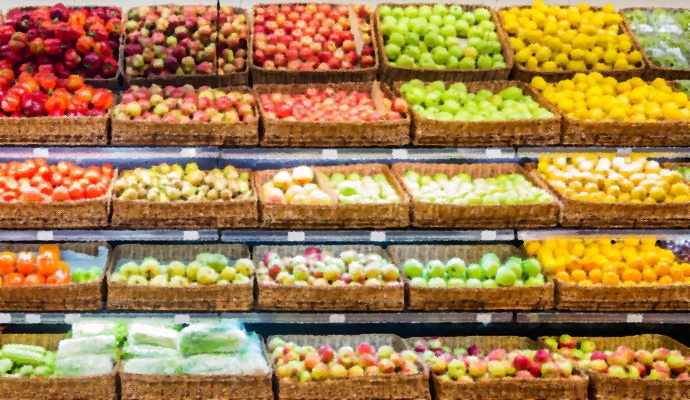Mobile App Data Reveals Prevalence of Urban Food Deserts
Using data from mobile apps could help provide real-time representation of food deserts in underserved communities.

Source: Getty Images
- Crowdsourced data from mobile apps like Yelp could help leaders identify food deserts and guide health policy, according to a study published in Frontiers in Public Health.
The classification of food deserts, developed by the US Department of Agriculture (USDA), provides a standard for identifying low-access to healthy food across the US. The USDA considers three metrics when identifying food deserts: income, car ownership, and distance to the nearest supermarket. However, researchers noted that there should be a more comprehensive food access metric that accounts for more than just these three elements.
To improve the accuracy of food desert locations, researchers from the University of Texas at Dallas (UT Dallas) examined two additional factors not included by the USDA: access to public transit and shopper-provided food pricing gathered from Yelp.
“If a community has few public transportation options nearby, that may contribute to the existence of a food desert,” said Dr. Dohyeong Kim, associate professor of public policy and political economy and of geospatial information sciences in the School of Economic, Political and Policy Sciences at UT Dallas.
“Plus, low-income households still face limited access to healthy food if prices are too high.”
Researchers analyzed data from Dallas’ 296 census tracts, which are neighborhood-sized geographical areas used by government agencies to collect population data. Nine census tracts were identified as food deserts based on the USDA’s 2015 data only. Using 2018 Yelp data alone, researchers identified 50 census tracts, mostly in south Dallas, as food deserts. Thirty-three census tracts were overlapped by both data sources.
“Using data from the city of Dallas, we compared our results with the 2015 USDA database and discovered the agency needs an up-to-date source of information on grocery stores," said Kim. “The number of food deserts may be a lot larger than what the USDA says it is.”
Because of the time difference between the two data sources, the team pointed out that they could not confirm which dataset, USDA or Yelp, matches the current situation more accurately. They also emphasize that Yelp should not be considered a replacement for government data.
“The USDA data are supposed to be more exhaustive at the time of data collection, but the data may be limited in reflecting dynamic changes in grocery store presence over time,” researchers said.
“Our comparison demonstrated the feasibility of Yelp data as a free and real-time source of mapping for healthy food accessibility, not as a substitute but as a complement of the USDA data.”
By leveraging crowdsourced, georeferenced data, researchers could supplement official government data and help guide public health policies.
“Yelp data is still incomplete in coverage and limited for wide application, although it has the potential to be improved in the future,” Kim said. “This study sheds light on the need for on-the-ground, place-specific observation in the study of food deserts, and future studies should include multiple cities to gauge the quality of Yelp data across the country.”
Leaders could also use crowdsourced data to help guide other public-health mapping, the group noted.
“This study shed light on the need for an on-the-ground direct observation of food inventory to better interpret the data presented in this study, because the goods offered vary greatly between national chain grocery stores and small food retailers. To address this issue of healthy food access at the local level, place-specific strategies have been suggested that rely more on local area sources in describing healthy food access,” researchers concluded.
“Future work should include multiple cities across the US to demonstrate the representative quality of Yelp data across the country. Moreover, the method used in this study could give guidance to future studies, not only on food deserts but also on other public health mapping such as noise mapping and pollution mapping.”
